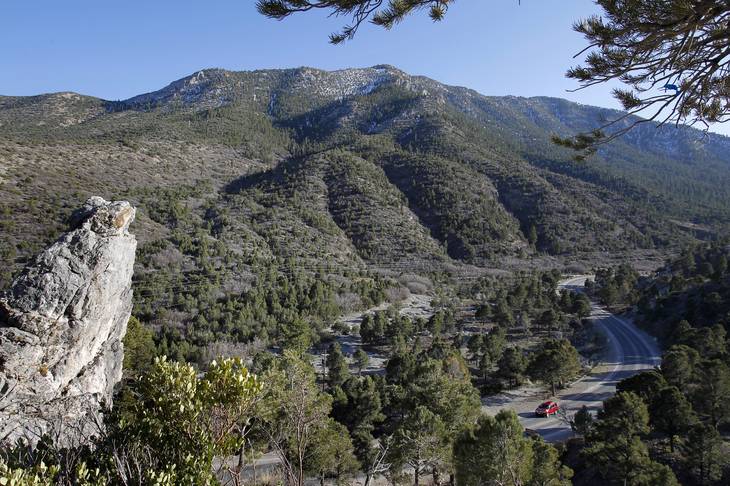
Richard N. Velotta
Related content
Big Bear Lake in Southern California is offering refuge from Southern Nevada’s heat this month. That got me to thinking about whether someday the Mount Charleston area could develop into a bigger summer haven than it already is — and if local residents would want to see that.
Last week, Big Bear announced that the Shell gas station at Big Bear will offer regular unleaded gasoline for $2.49 a gallon, $2.59 for midgrade and $2.69 for premium. The offer is good only for customers with a Nevada license on July 30 and 31.
The idea is to entice Southern Nevadans into familiarizing themselves with Big Bear, known primarily as a ski resort.
Big Bear is about 215 miles from Las Vegas, with most of the journey on Interstate 15.
Dan McKernan, director of marketing and public relations for the Big Bear Lake Resort Association, said there’s plenty to do at the 7-mile-long lake that has 22 miles of shoreline in the San Bernardino Mountains.
In addition to the standard fare of camping and hiking, there’s a wide range of other activities around the lake.
There are more than 50 miles of trails of various length and difficulty. The 2,663-mile Pacific Crest Trail, which extends from Mexico to Canada through California, Oregon and Washington, meanders just north of the lake. There are about a dozen campgrounds, most of them with group areas. They can accommodate campers in tents or recreational vehicles.
Mountain biking and horseback riding are available.
There’s a helicopter tour concession and an outlet for Segway tours. Visitors can also zipline on nine runs among the pine trees or take a chairlift ride at some of the ski slopes.
That mountain-air zipline sounds a lot more appealing than the Bootleg Canyon concession at this time of the year. Who knew the Fremont Street Experience zipline would be such a monster hit, while Segway tours there would be an epic failure?
There’s off-road adventuring in 4-by-4s, a wild animal park with 160 animals, a golf course and a bowling center. At one of the ski areas, there’s an alpine slide — a bobsled-like ride down a concrete track that’s popular at resorts in Colorado, Utah and Vermont.
On the lake, there’s a wide range of water attractions to choose from — replica pirate ship and paddlewheel boat tours, fishing charters and guides, pontoon boating, kayaking, canoeing, jet skiing and parasailing. The parasailing concessionaire also operates a New Zealand jet boat — the only one west of the Mississippi.
Big Bear also touts its spa amenities, shopping, dining and resort options. The area considers Las Vegas to be its No. 3 market opportunity behind Los Angeles and San Diego.
“We’ve really got a lot of things to do and, at 7,000 feet, it’s much cooler here,” McKernan said.
Which leads me back to Mount Charleston.
That’s our local cool-air relief. Anyone who lives in Southern Nevada and hasn’t made a trip to Lee Canyon or Mount Charleston in the summer has missed one of the joys of living here.
The area has 350 campsites and picnic areas, and the Las Vegas Ski and Snowboard Resort at Lee Canyon offers scenic chairlift rides Fridays, Saturdays and Sundays during the summer.
The ski resort also has a four-concert “Music on the Mountain” festival with July 28, Aug. 18 and Sept. 8 dates on the horizon.
The ski resort is expanding and last year received permission to build a small reservoir so the area could produce artificial snow. Most people were stunned to learn that the first ski area to open in the United States last season was in Nevada — and it wasn’t at Lake Tahoe. It was the Las Vegas Ski and Snowboard Resort.
Representatives of the resort have said that someday, they’d like to expand the amenities, possibly putting more summer draws in place.
There’s potential for mountain biking, ziplines and alpine slides. Obviously, there’s no lake for water sports, but the relief from the desert heat may be all it needs.
Access is an issue. There’s just one road to Mount Charleston and one to Lee Canyon (they’re connected by a highway near the summit). Traffic and parking can be problematic.
There also may be an argument for not making it too big in order to preserve the simple presence of the mountain.
But Mount Charleston doesn’t need to be Big Bear to provide an enjoyable summer diversion.
